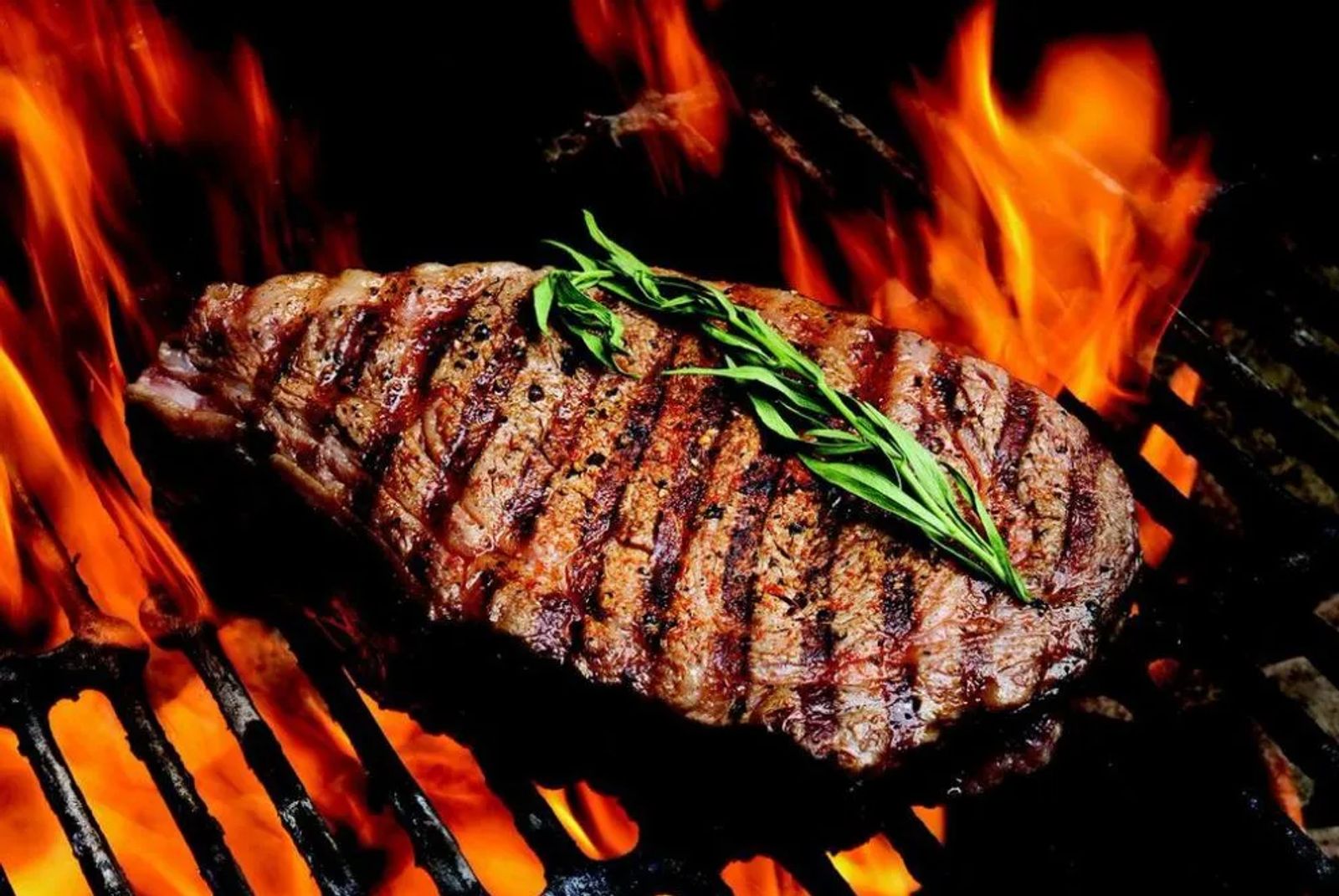
Be a Bona-fide Grill Master
Expert advice to help you conquer your "cue
Few could argue that one of the beauties of summer is firing up the grill and listening to the sounds of a steak being seared to perfection. Or seeing beautifully grown veggies cooked on kabobs, ready to take on the grill"s fire-roasted flavor. If you still haven"t earned the title of "Grilling Great," don"t worry, we have some tips and tricks from a bona-fide grill master.
Mark Doucette knows a thing or two about grilling. Not only does he oversee Albertsons Meat and Seafood department, working with chefs in the beef, pork, poultry and seafood industry directly, but most weekends you"ll find him serving as King of the Grill, cooking for family and friends. "Grilling a whole salmon fillet, rib steak or raw shrimp and seeing the reaction of your guests on how it compares to their favorite restaurants never gets old," he says. He loves sharing the tips and tricks he"s learned over the years. Thanks to a little Q & A, he has some sure-fire advice that will have you grilling like a master in no time.
Q. Grilling success, no doubt, begins with just the right cut of meat. Do you have any advice on picking out just the right cut?
"With beef it’s all about the marbling. Marbling helps ensure tenderness, flavor and juiciness. Most beef is sold in three different grades, Select, Choice and Prime. Any of your better steak houses will serve only Choice or Prime cuts. I always grill with a Choice cut, due to the cost. It has a better flavor and tenderness than Select. Prime cuts do take it up to the next level, but usually your cost will be at least 25% to as much as a 100% higher. Grilled correctly, the difference between Choice and Prime is minimal. The cuts of beef that must be marbled are from the beef loin, such as Rib steaks, Rib eyes, T-bones, or New Yorks. For a great cheaper cut, try Chuck Eye and Flat Iron steaks. If you want to save some money, marinate cuts like petite sirloins, top round steak and even chuck steak to improve the tenderness and flavor. With seafood, almost all shellfish like shrimp, oysters and crab will work great on the grill. With fish fillets, you want to avoid those that are described as delicate, such as Dover sole, flounder and tilapia. Instead, choose firmer fish such as salmon, halibut, tuna, or mahi mahi for the grill."
Q. Gas or Charcoal — what"s your favorite and why?
I prefer to use a gas grill due to the speed and ease. The newer gas grills cook very evenly and you can control the temperature. To impart a smoked flavor, I always use a cedar plank or wrap for grilling. With charcoal, it takes longer for a meal to cook and controlling the temperature and flare ups can be a challenge.
Q. Many people don"t worry about oiling their grills before use -- is this a forgotten trick?
For beef, oiling the grill is not necessary if you let the meat set out at room temperature for an hour. Beef will, at the very start, stick to the grill but as the meat heats, the marbling will allow it to gradually release. For chicken, pork and fish fillets, if you want to avoid the oil, a neat trick is to heat the grill, cut a raw potato in half, stick a fork in the potato and wipe down the grill with the potato"s flesh. The starch from the potato with seal the small pin holes in the grill, which causes your meat to stick.
Q. How do you know the heat is just right on your grill to start cooking?
For beef and pork I always make sure my grill starts at 400 to 450 degrees to quickly sear the outside and seal in the juices. One trick a professional chef once taught me is to place your hand 1" above the grill and count to 3. If at 1 or 2 it is too hot to hold your hand there, the heat is too high. At 3, it should be perfect. If you count all the way to 10, you forgot to turn on the grill.
Q. Why is it key to allow time for meats to marinate?
You want to ensure you allow time for the marinade to permeate the entire cut of meat. For seafood, marinating for two to three hours is fine, as seafood absorbs flavors very easily. For pork and chicken, I try to let it marinate for at least four hours and for beef at least eight hours (overnight is even better). Also Italian dressing is a great basic marinade. It adds a wonderful flavor and the citric acid in the dressing helps tenderize the meat.
Q. When is the best time to add barbecue sauce to your meats?
Due to the fact almost all BBQ sauce is sugar based, you want to add it in the last minute or two of grilling to prevent the sugar from caramelizing and burning.
Q. Any tips for grilling veggies or tricky items like fish?
With fish, the tendency is to overcook, which will cause it to be dry and tough. A great way to prevent this is to test the fish with a small fork. Once the fillet flakes easily, it is done and you"ll want to remove it from the grill at once. Another tip that will help keep your fish moist is to brush it with mayonnaise or fat-free Greek yogurt before placing it on the grill. Not only will this help prevent the fish from sticking, it will also help keep the fish moist.
Q. Any other sure-fire tips to ensure grilling success?
I always allow my meat to set out at room temperature for one hour before grilling. This allows the meat to quickly sear and seal in the flavor. I season very lightly, mostly with only coarse ground pepper and a light coating of olive oil. If you want to use salt, I prefer doing it afterward to prevent the meat from drying out (salt absorbs moisture). Never use a fork to pierce and turn the meat. This allows the juices to escape. Also never flip your meat more than once. After you remove your meat from the grill, let it rest for four to five minutes. This will allow the meat to relax, become more tender and redistribute the juices. Cutting the meat too soon will allow all the juice to spill out.









